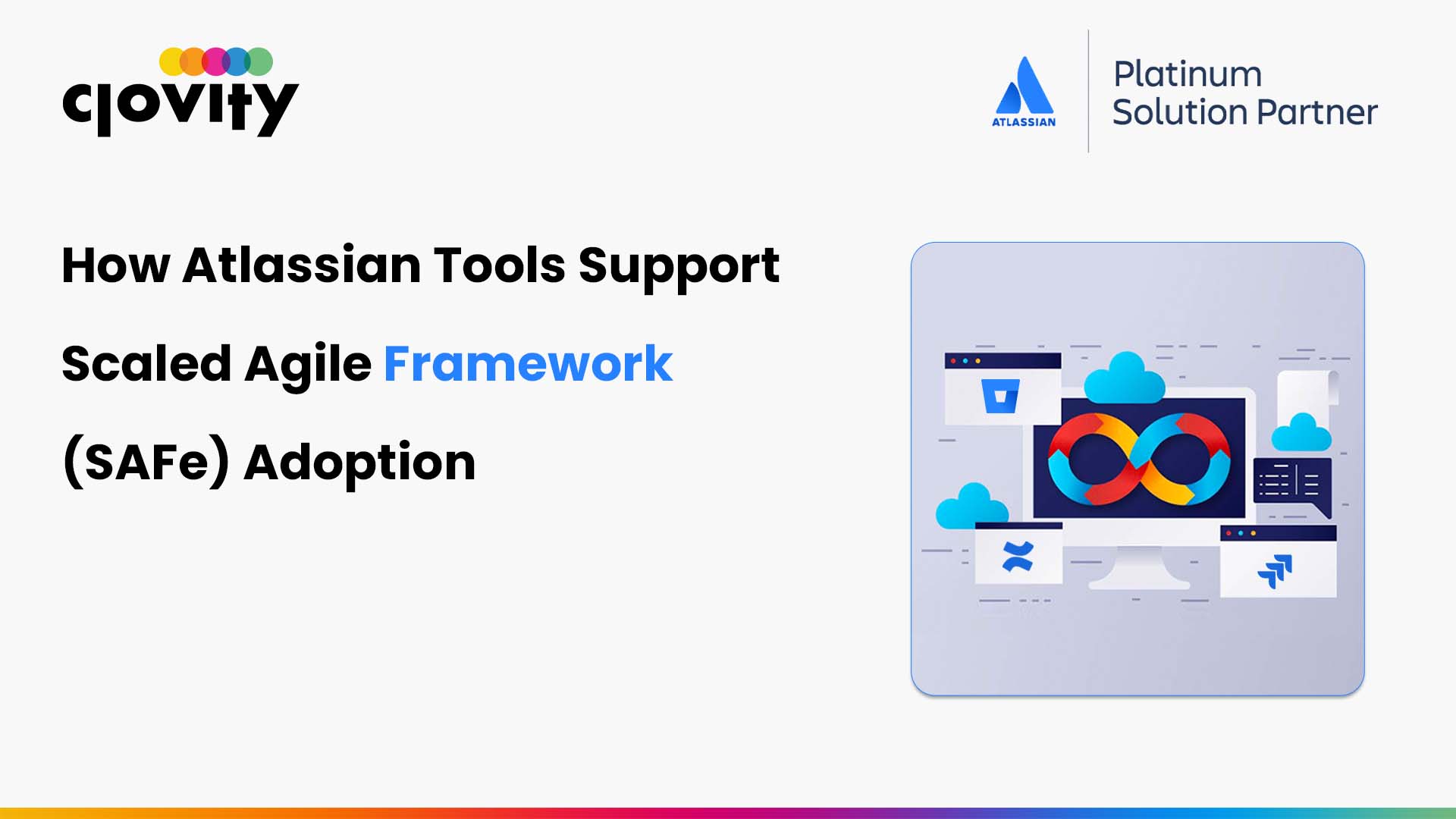As organizations grow, so do the complexities of delivering software and coordinating cross-functional teams. Scaling Agile from small product teams to enterprise-level alignment requires more than additional sprint boards—it requires a framework that unites teams, programs, and leadership. The Scaled Agile Framework (SAFe) is one of the most adopted approaches for this, but its success depends on having the right supporting tools.
Atlassian’s suite—Jira Software, Jira Align, Confluence, and Jira Service Management—maps directly onto SAFe’s layers: from Portfolio Management to Program Increment (PI) Planning, Agile Release Trains (ARTs), and continuous improvement. Below, we explore how these tools can drive coordination, visibility, and outcomes at each SAFe level.
Why SAFe Requires the Right Toolset
SAFe divides work into layers (Team, Program, Portfolio). Without tools that span those layers, organizations face:
- Poor visibility across ARTs
- Difficulty linking strategy to execution
- Disconnected reporting and manual PI coordination
Atlassian tools bridge these gaps in a unified environment.
1. Jira Align: Enterprise Visibility & Coordination
- Strategic Themes & Portfolio Epics: Define business goals and break them into portfolio epics, features, and stories.
- Program & PI Management: Plan and execute PIs, track dependencies, and manage ART backlogs with visual boards and real-time updates.
- Value Stream Mapping: Map end-to-end value flow to optimize delivery.
- Capacity & Roadmapping: View team capacities against committed PI objectives for realistic planning.
For multiple ARTs, Jira Align is essential to scale coordination without losing transparency.
2. Jira Software: The Team Execution Layer
- Sprint Planning & Execution: Use Scrum or Kanban boards to manage stories, tasks, and swimlanes.
- Team Backlogs: Keep backlogs healthy and aligned with program-level features.
- Integration with Jira Align: Roll up team data to program and portfolio dashboards for consistency.
- Advanced Roadmaps (Jira Premium): Visualize dependencies and coordinate cross-team releases.
3. Confluence: Documentation & Knowledge Sharing
- PI Planning Artifacts: Store PI objectives, team plans, and feature dependencies in dedicated spaces.
- Team & Working Agreements: Document norms, roles, and cross-team agreements.
- Training & Onboarding: Centralize SAFe training materials and role-based documentation.
- Retrospectives: Capture learnings and improvement actions per PI.
Embed Confluence pages in Jira issues to give teams contextual access to documentation.
4. Jira Service Management: Supporting Agile Operations
- Change Enablement: Align change approvals with PI objectives via automated workflows.
- Incident Management: Link incidents to Jira issues for prioritized resolution within sprints.
- Service Requests: Allow internal support teams (HR, Facilities, Legal) to use structured, SLA-driven workflows.
5. Program Increment (PI) Planning in Practice
Before PI Planning: Define objectives in Jira Align or Confluence; prepare feature backlogs in Jira Software; publish agendas in Confluence.
During PI Planning: Use Confluence templates for breakouts; track dependencies in Jira Align; enter committed objectives into Jira for live tracking.
After PI Planning: Sync program boards to team sprints; monitor PI progress via dashboards; document retrospectives in Confluence.
6. Measurement & Continuous Improvement
- Feature Cycle Time
- Team Velocity Across Sprints
- Dependency Resolution Rates
- PI Objective Completion Rates
- Team Health Survey Results
Regularly reviewing these metrics enables data-driven adjustments to planning and staffing.
Getting Started with Atlassian for SAFe
- Team-Level Agile: Jira Software & Confluence
- Scaled Coordination: Advanced Roadmaps
- Enterprise Alignment: Jira Align
- Operational Support: Jira Service Management
Final Thoughts
SAFe adoption is as much about mindset as methodology—and the right tools make alignment, visibility, and continuous improvement achievable. When configured with care, Atlassian’s product suite becomes the backbone of your SAFe implementation, supporting strategy, execution, and learning in equal measure.


